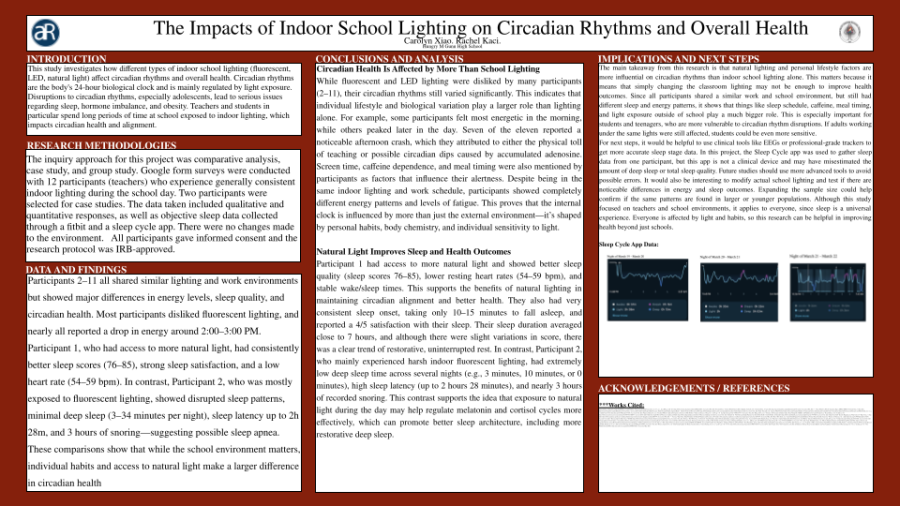Summary
The purpose of this study is to gather data on the different types and levels of indoor lighting and how they affect the performance and health of teachers and students. Different classrooms receive varying amounts of natural, fluorescent, and LED light, leading to changes in circadian rhythms, energy levels, and productivity. Circadian rhythm disruptions caused by flaws in indoor lighting are a major concern, as the circadian rhythm—our body’s instinctive 24-hour clock—regulates hormone release, metabolism, and body temperature. These rhythms are primarily controlled by the suprachiasmatic nucleus (SCN), which responds to changes in brightness, spectral distribution, and the timing of light. Adolescents are particularly susceptible to circadian rhythm disruptions, often experiencing irregular sleep-wake cycles that harm their overall health. Prolonged disruptions can lead to issues such as obesity, high blood pressure, and cancer. This study will help identify patterns between school lighting conditions and their effect on the performance and health of students and teachers, providing insights to minimize circadian disruptions and improve well-being in educational settings.

